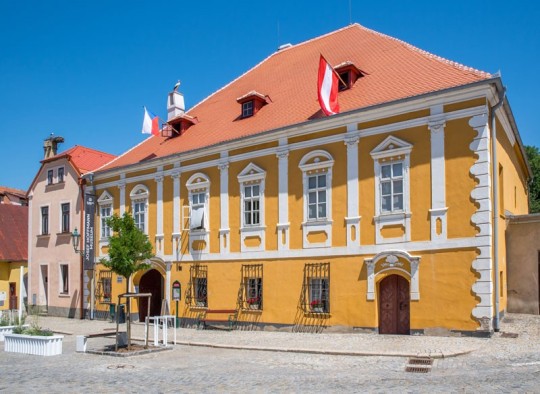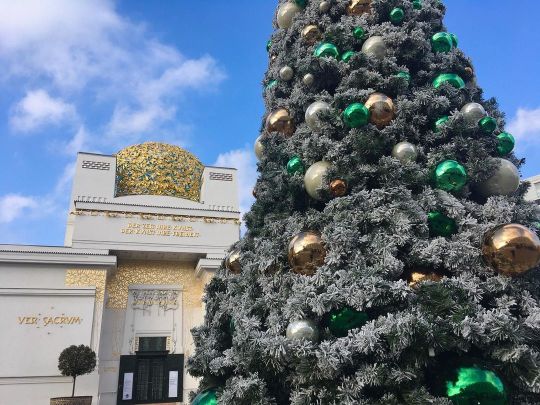#Vereinigung bildender Künstler Österreichs Secession
Explore tagged Tumblr posts
Text


Ernst Stöhr (1860-1917)
Narrative and illustrations by Ernst Stöhr, from the periodical Ver Sacrum

12 notes
·
View notes
Text
0 notes
Text
15 Jahre Josef Hoffmann Museum: Brtnice (CZ) bis 30.10.2022
15 Jahre Josef Hoffmann Museum: Brtnice (CZ) bis 30.10.2022
Seit 2006 führen das MAK und die Mährische Galerie in Brno das Geburtshaus Josef Hoffmanns in Brtnice, Tschechien, als gemeinsame Außenstelle. Der Pionier der Wiener Moderne blieb seinem Elternhaus, das ihm zeit seines Lebens als Inspirationsquelle diente, stets verbunden. Die Ausstellung 15 JAHRE JOSEF HOFFMANN MUSEUM lässt die Neunutzung seines Geburtshauses und die Ausstellungen der…

View On WordPress
#Architektur#Artists-in-Residence-Programm#Brtnice#DER BAROCKE HOFFMANN#Design#Designdenken#Fortschritt durch Schönheit#Geburtshaus#Gestaltung#Handschrift#Interior#Josef Hoffmann Museum#klassische Moderne#Kulturerbe#MAK#Restaurierung#Sammlung#Vereinigung bildender Künstler Österreichs Secession#Vermittlungsprogramm
1 note
·
View note
Text

Tod und Mädchen. Ferdinand Kitt.
XLVI. Ausstellung der Vereinigung Bildender Künstler Österreichs Secession, Wien
49 notes
·
View notes
Photo

Artists of the Austrian Secession. Ver sacrum: Mittheilungen der Vereinigung Bildender Künstler Österreichs. February 1899.
Heidelberg University
1K notes
·
View notes
Text
Wiener Secession
Die Wiener Secession, genauer Vereinigung bildender Künstler Österreichs, ist eine Vereinigung bildender Künstler in Wien aus der Zeit des Fin de siècle. Davon abgeleitet wird auch die Wiener Variante des Jugendstils als Secessionsstil oder Wiener Jugendstil bezeichnet.
Die Wiener Secession wurde am 3. April 1897 von Gustav Klimt, Koloman Moser, Josef Hoffmann, Joseph Maria Olbrich, Max Kurzweil, Josef Engelhart, Ernst Stöhr, Wilhelm List, Adolf Hölzel und anderen Künstlern als Abspaltung (Secession) vom Wiener Künstlerhaus gegründet, da die Künstler den am Künstlerhaus vorherrschenden Konservatismus und traditionellen – am Historismus orientierten – Kunstbegriff ablehnten. Vorbild war die Münchner Secession.
https://de.wikipedia.org/wiki/Wiener_Secession
secessionistischen Konzept des Gesamtkunstwerks

Die Wiener Secession ist bis heute ein wichtiges Ausstellungshaus für zeitgenössische Kunst in Wien.
6 notes
·
View notes
Text

Kollektiv-Ausstellung Gustav Klimt : XVIII. Ausstellung der Vereinigung Bildender Künstler Österreichs Secession Wien, Nov.-Dez. 1903
c. 1903
1 note
·
View note
Photo

Vienna Secession Poster design by Koloman Moser (1868–1918), Austria, 1902
Museum für Kunst und Gewerbe Hamberg
Provenance: not mentioned on website
EP2009.800
The Vienna Secession (German: Wiener Secession; also known as the Union of Austrian Artists, or Vereinigung Bildender Künstler Österreichs) was an art movement formed in 1897 by a group of Austrian artists who had resigned from the Association of Austrian Artists, housed in the Vienna Künstlerhaus. This movement included painters, sculptors, and architects. The first president of the Secession was Gustav Klimt, and Rudolf von Altwas made honorary president. Its official magazine was called Ver Sacrum which featured highly decorative works representative of the period.
[text source: @wikipedia]
Check out: Exhibition catalogues of the Vienna Secession in the digital library of Belvedere, Vienna
#vienna secession#poster#design#koloman moser#art#20th century#public domain#museum#art history#austria
33 notes
·
View notes
Photo

The Vienna Secession (German: Wiener Secession; also known as the Union of Austrian Artists, or Vereinigung Bildender Künstler Österreichs) is an art movement, closely related to Art Nouveau, that was formed in 1897 by a group of Austrian painters, graphic artists, sculptors and architects, including Josef Hoffman, Koloman Moser, Otto Wagner, and Gustav Klimt. They resigned from the Association of Austrian Artists in protest against its support for more traditional artistic styles. Their most influential architectural work was the Secession Building designed by Joseph Maria Olbrich as a venue for expositions of the group. Their official magazine was called Ver Sacrum (Sacred Spring, in Latin), which published highly stylised and influential works of graphic art. In 1905 the group itself split, when some of the most prominent members, including Klimt, Wagner, and Hoffmann, resigned in a dispute over priorities, but it continued to function, and still functions today, from its headquarters in the Secession Building. In its current form, the Secession exhibition gallery is independently led and managed by artists. #theviennasuccession #successionvienna #klimt #viennaarchitecture (at Vienna Secession) https://www.instagram.com/p/CX0cXJYgPsLBvLGtyrRev6JZ6TrBa3sSht1-_A0/?utm_medium=tumblr
0 notes
Text
Con lo "Stile Secessione" in tre mosse Vienna fa scacco all’Europa
Con lo “Stile Secessione” in tre mosse Vienna fa scacco all’Europa
di Sergio Bertolami 14 – L’arte nuova della Secessione viennese. La Wiener Secession fu istituita il 3 aprile del 1897. Il nome di Secessione viennese sintetizza quello ufficiale di Vereinigung bildender Künstler Österreichs (V. b. K. Ö.), ovvero Associazione degli artisti figurativi austriaci. La rivoluzione culturale della Secessione varcò, dunque, i confini tedeschi e si estese in Austria.…

View On WordPress
0 notes
Text
History of Vienna
Before the Vienna Secession
I want to set the seen what vienna was like before the vienna secession movement and how and why they decided to form.

The late 1800s and early 1900s were a quitet in Vienna. The tradition of a centuries-old monarchy and long-serving Habsburg emperor (Franz Joseph I) with the vibrant contemporary art scene “led” by the likes of Gustav Klimt.
Rudolf affair was kept but not spoken about in society. In 1889, many people at the court, including Rudolf's parents and his wife, Stephanie knew that Rudolf and Mary were having an affair.
Rudolf, Crown Prince of AustriaIn 1889, had died in a suicide pact with his mistress, at the Mayerling hunting lodge. Impact of the Crown Prince’s death.
This was a time when in Vienna when a family reputation could have been ruined by the lengh of a womans hem.
Klimt and his Viennese artist friends went to form their movement was forward-thinking, breaking all the rules taken their true skills.
The movement was, of course, Secession Movement
If you like to know what it translation in
Austria
”Vereinigung bildender Künstler Österreichs Secession.”
Just a bit of month full.
Princes Rudolf a was kept but not spoken about in society. In 1889, many people at the court, including Rudolf's parents and his wife, Stephanie knew that Rudolf and Mary were having an affair.
Rudolf, Crown Prince of AustriaIn 1889, had died in a suicide pact with his mistress, at the Mayerling hunting lodge.
Impact of the Crown Prince’s death
Freedom to go against traditional.
0 notes
Photo

I. KUNSTAUSSTELLUNG DER VEREINIGUNG BILDENDER KÜNSTLER ÖSTERREICHS. SECESSION (vor der Zensur) / Gustav Klimt (Künstler_in) (Wien 1862 - 1918 Wien)- Albert Berger, Wien (Druck) (Österreich, 1894 - 1937). Österreich, 1898
0 notes
Photo

Koloman Moser Koloman (Kolo) Moser was born in March 1868 in Vienna to Josef and Theresia Moser. His father was a school caretaker. After completing primary school, Moser studied drawing at the trade school in Wieden. Moser was accepted at Vienna’s ‘Akademie der bildenden Künste' (‘Academy of Fine Arts’) in 1885. His parents supported his desire to study art. After the unexpected death of his father in 1888, Moser earned money by illustrating books and magazines, including fashion and humour publications. He remained at the ‘Akademie’ until 1892 and then continued his studies at the ‘Kunstgewerbeschule’ (‘School of Applied Arts’). Moser was a member along with Josef Hoffmann, Joseph Maria Olbrich, Max Kurzweil and others of the ‘Siebener-Club’ (‘Club of Seven’) a group that was the forerunner of the ‘Vienna Secession’. In 1897, Moser was a founding member of the ‘Vereinigung bildender Künstler Österreichs’ (‘Vienna Secession’). He was actively involved with the group’s journal ‘Ver Sacrum’ (‘Sacred Spring’) which remained in publication until 1903. In 1900, Moser was named a full professor at the ‘Kunstgewerbeschule’ where he taught decorative drawing and painting until his death. #neonurchin #neonurchinblog #dedicatedtothethingswelove #suzyurchin #ollyurchin #art #music #photography #fashion #film #words #pictures #neon #urchin #kolomanmoser #viennese #painter #diequelle #thesteinhofchurch #textiles #furniture #glass #porcelain #siebenerclub #interiordesign #tausendkünstler https://www.instagram.com/p/BvjDtPKAknx/?utm_source=ig_tumblr_share&igshid=m2fyj6dy5irl
#neonurchin#neonurchinblog#dedicatedtothethingswelove#suzyurchin#ollyurchin#art#music#photography#fashion#film#words#pictures#neon#urchin#kolomanmoser#viennese#painter#diequelle#thesteinhofchurch#textiles#furniture#glass#porcelain#siebenerclub#interiordesign#tausendkünstler
0 notes
Photo

Vereinigung Bildender Künstler Österreichs Secession [Hrsg.] Ver sacrum: Mittheilungen der Vereinigung Bildender Künstler Österreichs — 3.1900
Seite: 184DOI Heft: https://doi.org/10.11588/diglit.8877.12
DOI Seite: https://doi.org/10.11588/diglit.8877#0222
Zitierlink: http://digi.ub.uni-heidelberg.de/diglit/vs1900/0222

winter skills
0 notes
Photo

The Vienna Secession (German: Wiener Secession; also known as the Union of Austrian Artists, or Vereinigung Bildender Künstler Österreichs) was an art movement formed in 1897 by a group of Austrian artists who had resigned from the Association of Austrian Artists, housed in the Vienna Künstlerhaus. Gustav Klimt was one of the founders . Vienna, Austria April 13, 2017 #sinithvacance2017 (at Vienna Secession)
0 notes
Photo

Katalog der X. Kunst-Ausstellung der Vereinigung Bildender Künstler Österreichs Secession. 1901. Vienna Secession Catalogue, back cover.
Internet Archive
89 notes
·
View notes